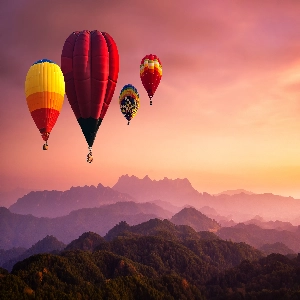
Navigating Cannaregio : Answers to common questions
- Washrooms: Public washroom facilities in Cannaregio can be found but are not abundant. It's advisable to use facilities in restaurants or public buildings when available.
- Hours of Operation: Cannaregio is accessible at all hours, but shops, restaurants, and attractions have individual operating hours, often closing earlier in the evening.
- Important Information: Cannaregio, known for its serene canals, historic architecture, and vibrant local life, offers a more authentic Venetian experience away from the main tourist areas.
- Admission Fee: No admission fee is required to explore the Cannaregio district, but attractions within the district may have their own entrance fees.
- How Long to Visit: Visitors can spend a few hours to a full day in Cannaregio, exploring its diverse attractions, dining options, and scenic views.
- Photography: Photography is encouraged in Cannaregio, capturing its historic buildings, picturesque canals, and local life. Always be respectful of residents' privacy.
- WIFI: Public WIFI access can vary, with some cafes, restaurants, and public spaces offering connectivity to customers or visitors.
- Picnic Area: While there are no designated picnic areas in Cannaregio, the district's parks and waterfronts provide scenic spots for outdoor meals.
- Parking: Parking is not available in Cannaregio due to Venice's car-free environment. Visitors typically park on the mainland or at Piazzale Roma and use water transport or walk.
- Family Friendly: Cannaregio is a family-friendly district, offering a mix of historical sites, parks, and waterfront areas suitable for visitors of all ages.
- Pets: Pets are common in Cannaregio, but they should be on a leash. Policies for pets may vary in indoor spaces like restaurants or shops.
- Guided Tours: Guided tours are available, offering insights into Cannaregio's history, architecture, and cultural significance, including its historic Jewish Ghetto.
- Restaurant or Cafe: Cannaregio offers a variety of dining options, from traditional Venetian cuisine to international dishes, catering to a range of tastes and preferences.
- Gift Shop: Shops in Cannaregio range from local artisan boutiques to larger retail stores, offering a variety of goods, from handmade crafts to Venetian glass and textiles.
- Handicap Accessible: Cannaregio is largely accessible with flat pathways and bridges, though some areas may have steps or uneven surfaces, typical of Venice's historic districts.
Please note all times and prices subject to change. Please check the offical website for details.
More in our list of Things To Do In Venice
;Santa Croce Current Weather
Local Temp: 19.5℃ / 67.1℉
High: 21.7℃ / 71.1℉
Low: 18℃ / 64.4℉
Humidity: 69 %
Local Time: 12:24
Map for Cannaregio
Did You Know?
Cannaregio is one of the six historic sestieri (districts) of Venice, Italy, and is known for its picturesque canals, historic sites, and vibrant local life. It's the second largest by area and the most populous of the city's districts, offering a mix of tourist attractions and residential areas.
The Ca' d'Oro (Golden House) is one of the most striking buildings along the Grand Canal in Cannaregio. This exquisite example of Venetian Gothic architecture gets its name from the original gilt and polychrome decorations that once adorned its façade. Today, it houses the Galleria Giorgio Franchetti, featuring a notable collection of art and sculpture.
Cannaregio is home to the Madonna dell’Orto Church, a beautiful example of Italian Gothic architecture. The church contains several masterpieces by the Renaissance painter Tintoretto, who is buried there. The church's name, meaning "Madonna of the Garden," is derived from a statue of the Virgin Mary that was found in a nearby garden.
The Jewish Ghetto, the world's first ghetto, was established in Cannaregio in 1516. This area became the confined living space for Jews in Venice for more than two centuries. Today, it remains a center of Jewish life in the city and houses several synagogues, a Jewish museum, and kosher restaurants.
The Cannaregio Canal, which is the main waterway through the district, serves as an important thoroughfare for Venetians and visitors alike. It's one of the largest canals in Venice and provides a less crowded alternative to the Grand Canal, with a number of scenic walks and charming bridges.
Travel Information for
Venice Visitors
Time Zone: Venice operates on Central European Time (CET), which is 1 hour ahead of Greenwich Mean Time (GMT+1).
Weather: Venice has a humid subtropical climate. Summers are warm and humid with average temperatures around 27°C (81°F), while winters are cold with temperatures averaging around 3°C (37°F). Acqua alta (high water) is a phenomenon that causes flooding in Venice, typically occurring in autumn and winter.
Population: Venice has a population of about 260,000 residents. However, this number is steadily decreasing due to various factors, including rising living costs and flooding issues.
Size: The city covers an area of about 414.6 square kilometers (160.1 square miles), including both the lagoon and the historical city.
Language: Italian is the official language. Venetian, a distinct dialect of Italian, is also widely spoken. English is commonly used in tourist areas.
Currency: Italy uses the Euro (€). Credit cards are widely accepted, but it’s always useful to have cash for smaller shops and restaurants.
Safety: Venice is generally safe for tourists. However, like in any major tourist destination, it's wise to be cautious of pickpockets and scams targeting tourists.
Tipping: Tipping in Venice is not obligatory, but it's appreciated. In restaurants, it’s customary to leave a small tip (around 5-10%) if the service is good.
Electricity and Plugs: Italy uses Type C, F, and L plugs, and the standard voltage is 230 V with a standard frequency of 50 Hz. Travelers from countries with different standards will need adapters.
Water: Tap water in Venice is safe to drink. In fact, it's known for being high quality.
Verified & Trusted Contact Information for Cannaregio
Address:
Venice, Metropolitan City of Venice, Italy
Latitude: 45.4433
Longitude: 12.3244













